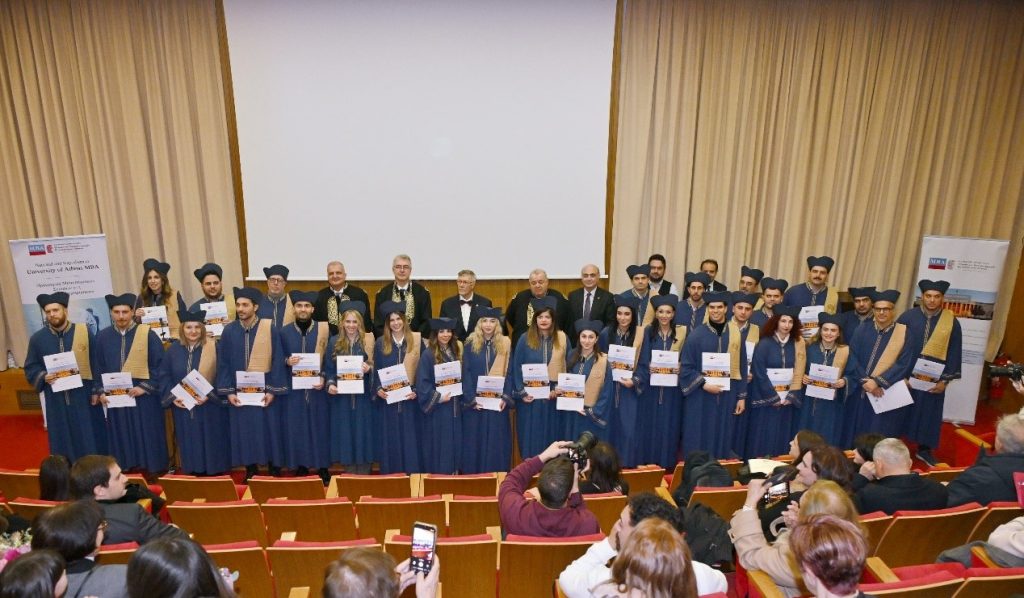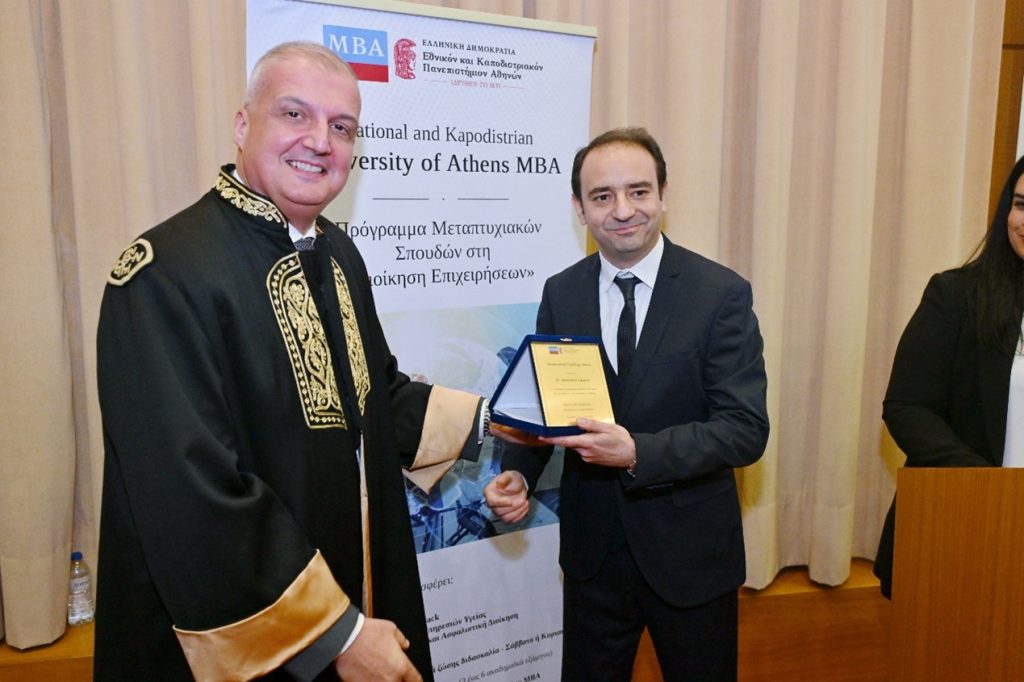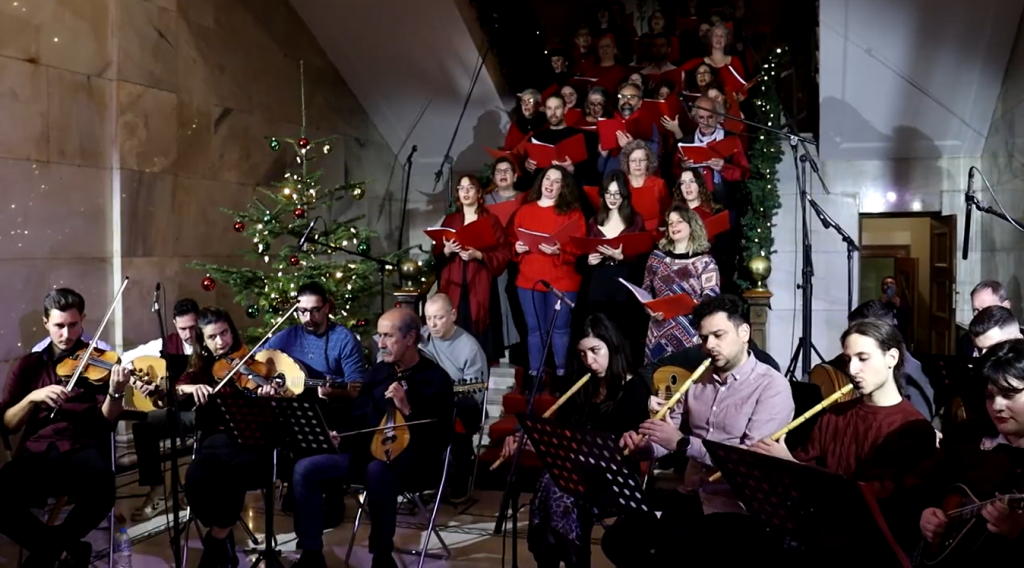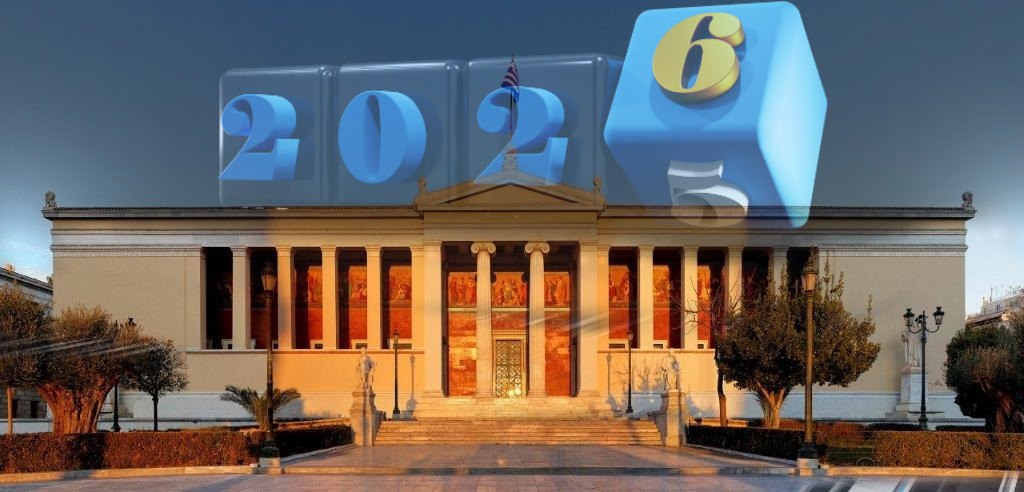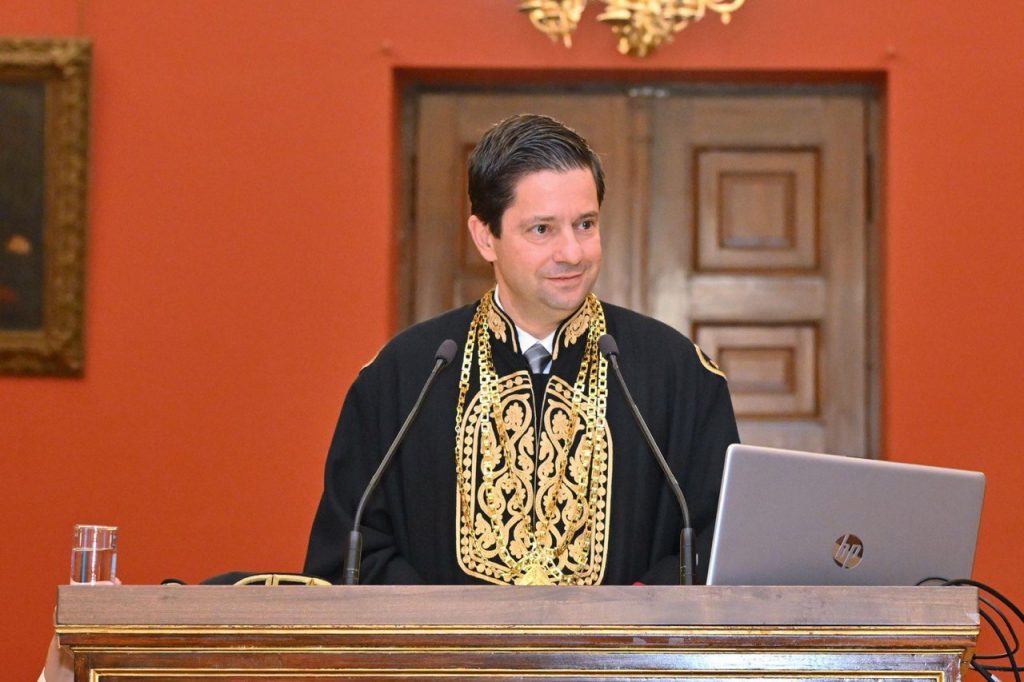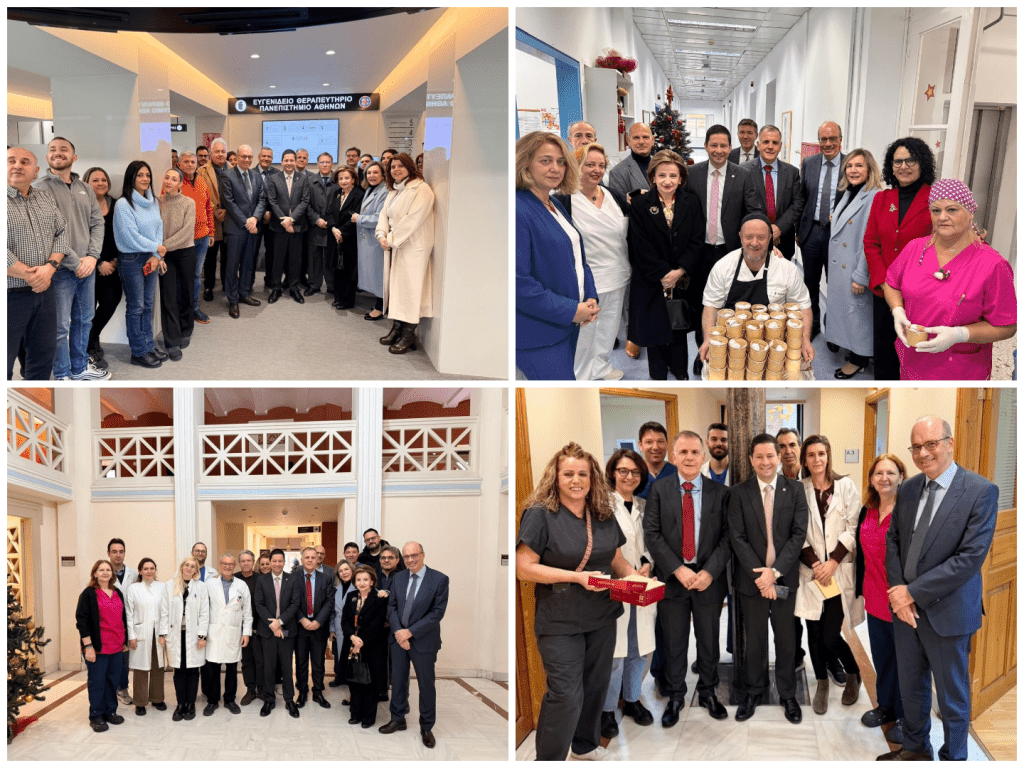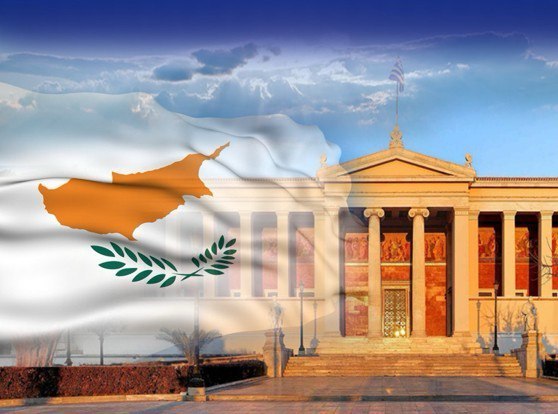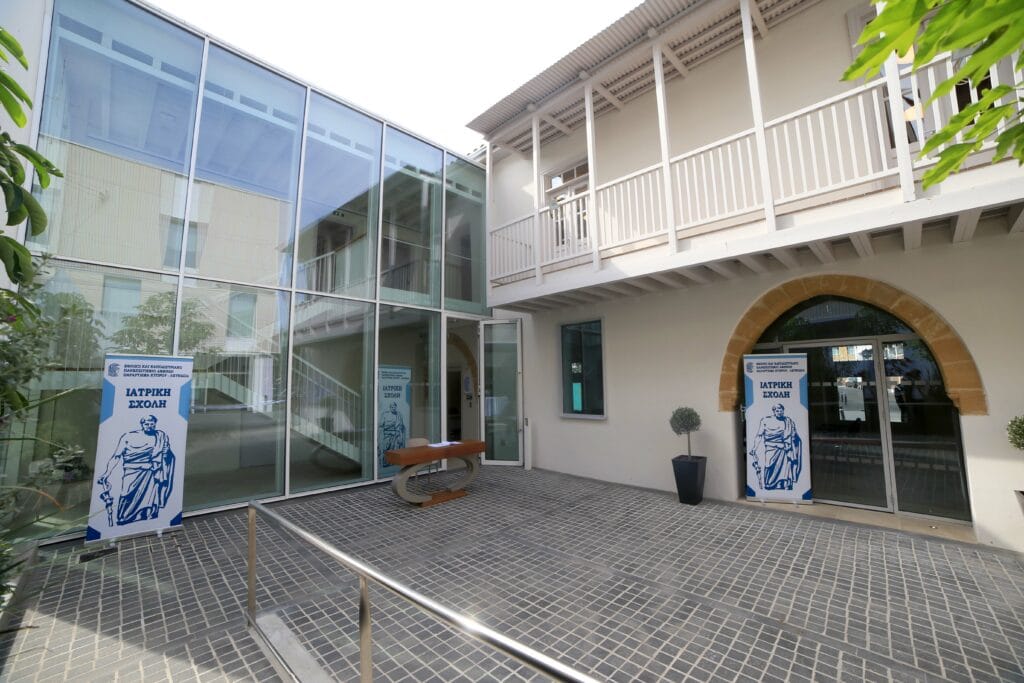Παρακάτω παρατίθενται στην αγγλική γλώσσα η ανασκόπηση καθώς και τα κύρια σημεία του Συνεδρίου “Complex Aortic Aneurysms”, που πραγματοποιήθηκε αποκλειστικά για επαγγελματίες υγείας, στις 10 Σεπτεμβρίου 2021 στην Αθήνα, στο Αμφιθέατρο “Κ. Δημόπουλος”.
Επίσημος ιστοχώρος Συνεδρίου: https://www.eventsapr.gr/attikon-caas/
Complex aortic aneurysm Symposium, Amphitheater «K. Dimopoulos», «Attikon Building» of the Medical School (AKISA) National Kapodistrian University of Athens in Greece
10th September 2021
The Hellenic Society of Vascular and Endovascular Surgery and the “Christos Liapis Complex Aneurysm Unit” of the Department of Vascular Surgery in Attikon University Hospital were very proud to co-organize the hybrid “Complex aortic aneurysm Symposium” which was held on the 10th September at the Amphitheater «K. Dimopoulos», in «Attikon Building» of the Medical School (AKISA) of the National and Kapodistrian University of Athens in Greece.
A warm welcome was given to all virtual and physical attendees by the Chairman and Professor of Vascular Surgery G. Geroulakos, the Vice President of the Medical School, of National and Kapodistrian University of Athens Professor N. Arkadopoulos, the representative of the Chief Executive of the “Attikon” Hospital, Professor of Internal Medicine D. Boumpas, and the Chief Vascular Surgeon of St Petersburg Professor. Alexei Svetlikov, from the Stroke and MI Prevention Center, in Thrombosis treatment Center at Federal Biomedical Agency of Russia.
Thereafter, lectures by foreign distinguished surgeons followed, coordinated by the chairmen T. Chamogeorgakis, S. Georgopoulos and C. Maltezos. Dr. D Avgerinos talked about valve-sparing aortic root replacement, which is an established surgical option of aortic root pathology. Dr Avgerinos highlighted that the recognition of key anatomic features affecting the valve competency and correcting them is critical in achieving a successful and durable repair.
Professor S. Haulon then presented the experience of his centre about the total percutaneous arch repair and endoBentall procedure. He underlined the durability and technical success of this operations and the benefits gained from avoidance of bilateral carotid cutdowns and neck hematomas.
Professor N. Tsilimparis, presented his experience with the use of the Munich Valsalva Implantation Technique (MuVIT) for cardiac output reduction during TEVAR, which involves vena cava occlusion with the valsalva manoeuvre. He underscored that MuVIT is simple and easy to perform, non-invasive, cost-effective. However, he drew to the audience’s attention that success depends on the experience of the anaesthesiologist, patient selection to avoid right heart decompensation and careful use in patients with COPD.
Professor G. Geroulakos in his presentation performed a comparison of open and endovascular management for juxtarenal/suprarenal aneurysms. He concluded that preliminary evidence suggests that both techniques are usually effective, but f/b EVAR is at least twice as expensive compared to open repair and has a higher reintervention rate, while prospective comparative studies on long-term outcomes and health economics are missing.
Professor S. Debus talked about the organization of an aortic centre and innovations associated with this. He underlined that specialization can lead to innovation, translation research can be key for new paths and that there is a need for dedicated specialists who will work in an adequate environment, which will eventually lead to clinical growth.
After a short break, the next session included seven very interesting presentations, coordinated by the chairmen S. Kakkos, K. Filis and A. Giannoukas. Dr. A Panagiotopoulos underlined that 30-days postoperative mortality does not capture the full picture of post op mortality in suprarenal aneurysms treated with open surgery. He suggested that in-hospital morality provides a more realistic outlook of the mortality of complex aortic aneurysm repair.
Dr. K. Antonopoulos presented evidence from a meta-analysis which was performed by the Vascular Team at “Attikon Hospital” which found that endovascular repair has 3 times higher spinal cord injury rate versus open surgery in the management of juxtarenal/suprarenal aneurysms. He underlined that atherosclerotic risk factors were 1.5-4 times more prevalent in the endovascular group He also reported that a linear increase in the complexity of endovascular procedures produced a very steep increase in the odds of spinal cord ischemia among the patients who were treated with EVAR. He concluded that SCI should be discussed during shared-decision making with the patient.
Professor H-H Eckstein presented thereafter under the title “international variation in EVAR rates for abdominal aortic aneurysm repair”. His presentation underscored the importance of centralization, which will improve patient selection, perioperative outcomes, enhance training for residents and reduce financial cost.
Dr. C. Bicknel followed with the presentation entitled “hostile proximal neck in EVAR – angulated, short or conical”. He underlined that there is an evidence gap that should be filled with future studies, concerning anchor, chimney registry, BSET Globalstar registry and data from fenestrated procedures. He pointed out that the new technologies should be further investigated and complimentary therapies should be further enhanced before we can provide a more stable solution for patients with hostile proximal neck.
Professor J. Kakisis thereafter, presented the Attikon University Hospital experience with biological conduits for the management of infected aortic prosthesis. He presented the excellent results of 7 NAIS, 3 semi-NAIS and 3 aortic reconstructions with bovine pericardium. He underlined that this type of operation is a good solution for this cohort of patients, avoiding the problem of aortic stump blowout.
A video presentation followed by Ass. Professor. K. Moulakakis concerning the rertroperitoneal approach for the open surgical repair of juxtarenal/suprarenal aneurysms. The speaker presented all key points and important steps of this demanding operation.
Finally, Dr. I. Loftus presented the value of the registries in quality improvement in the provision of vascular services. He pointed out that international registries highlight variations in practice, are vital for quality improvement, must be mandatory and open to scrutiny and they are cost-saving if appropriately applicated.
At the end of the meeting, Prof. G. Geroulakos welcomed and awarded the honoured Professor Christos Liapis, who kindly corresponded and gave a short warm speech. The meeting ended with a brief introduction and presentation of an award to the legal non-profit organisation, SYN-ENOSIS of the Greek Shipowners’ Social Welfare Company.
Authors of the Report: Dr K. Antonopoulos, Professor G. Geroulakos


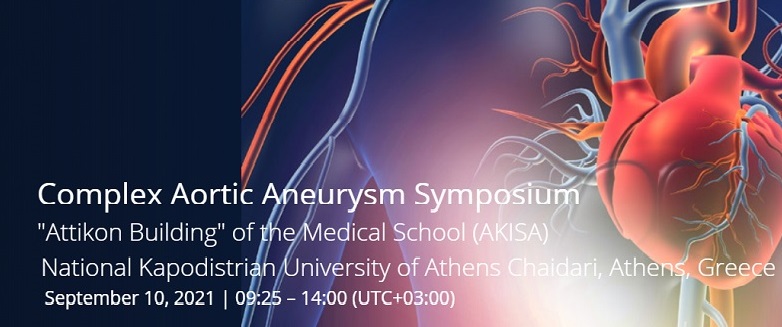

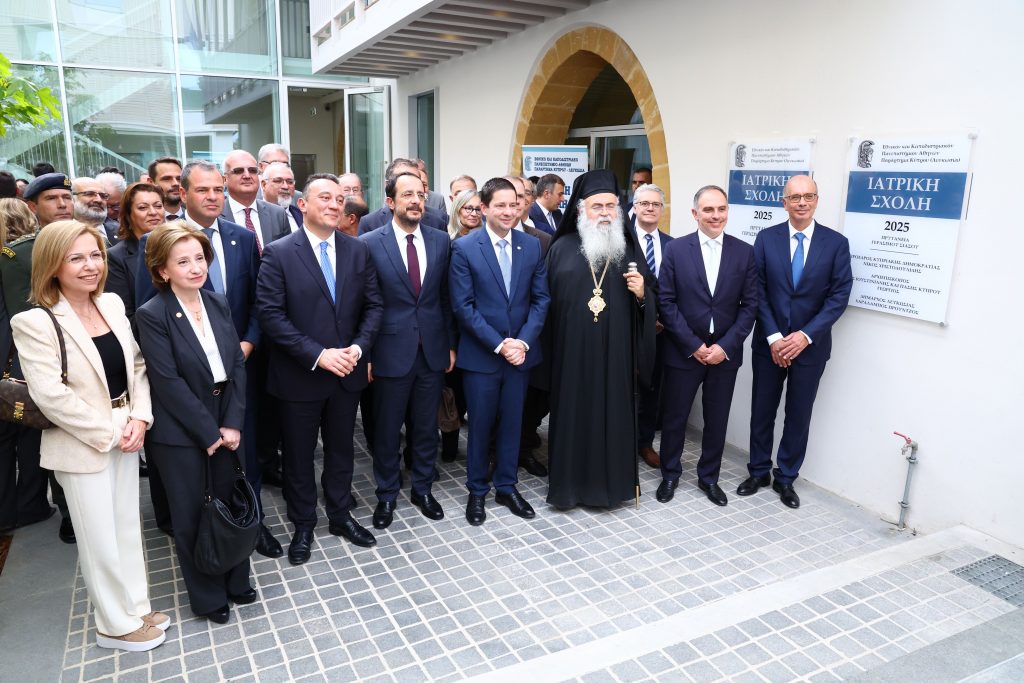
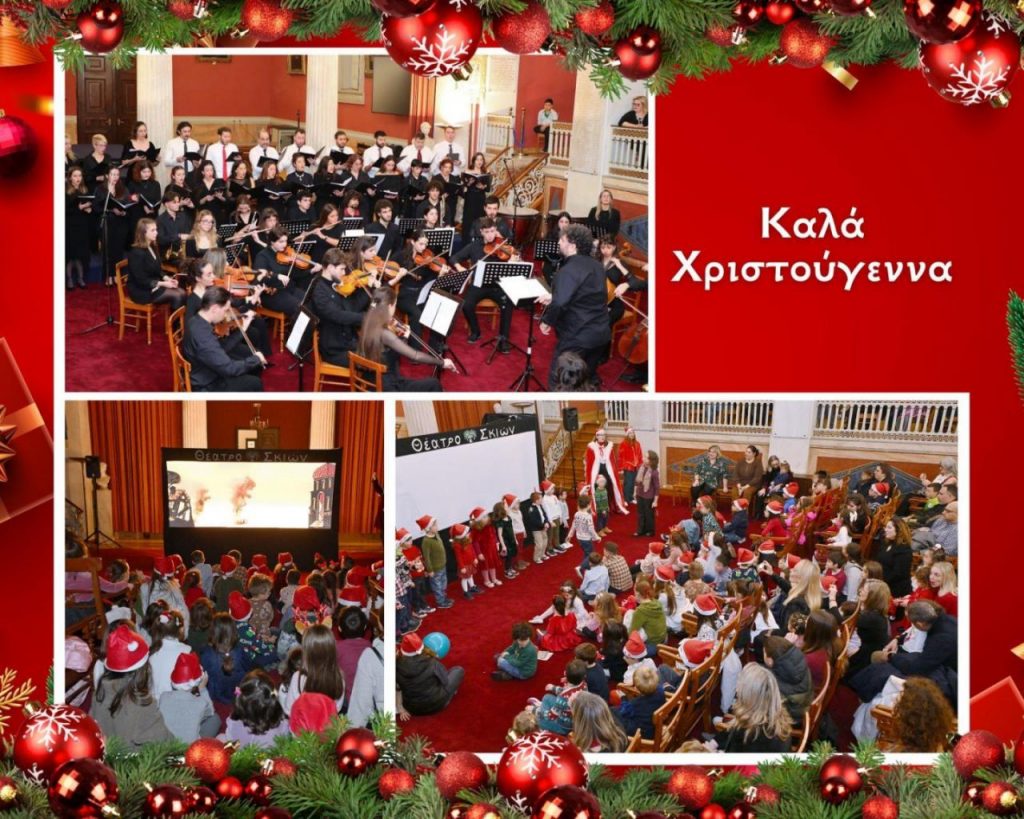
![Εκδήλωση της Νομικής Σχολής και της Ένωσης Αστικολόγων με τίτλο «Προς ένα νέο Κληρονομικό Δίκαιο» [14/1/2026]](https://hub.uoa.gr/wp-content/uploads/2025/12/csm.jpg)
